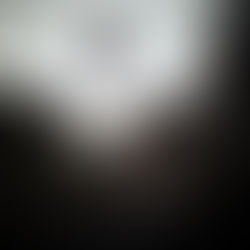What is cryotherapy?
What is cryotherapy?
The term ‘cryotherapy’ literally means ‘treatment using low temperature’, and refers to the removal of skin lesions by freezing them.
What conditions can be treated with cryotherapy?
A wide variety of superficial benign (non-cancerous) lesions can be treated with cryotherapy, but it is most commonly used to remove skin warts, seborrhoeic keratoses, skin tags, sebaceous hyperplasia, molloscum and other benign lesions.

Who performs cryotherapy?
Cryotherapy is performed following a consultation with a specialist nurse or doctor, who will diagnose the skin lesion to ensure it is appropriate for cryotherapy. If there is any doubt about the lesion a referral to dermatology for a biopsy will be advised. The professional performing cryotherapy must be a medical professional (nurse or doctor) with experience and training in dermatology & cryotherapy.

What does the procedure involve?
Although there is slight local pain felt, cryotherapy does not normally require a local anaesthetic, and the procedure itself lasts a matter of seconds; the precise time depending on the thickness and size of the lesion. The frozen skin becomes white and takes one to two minutes to thaw to normal skin temperature. The procedure is repeated up to 6 times, depending on the type of lesion you have.
Over the succeeding few days, a scab will form, and this will take one to two weeks to fall off. Usually, the treated area will eventually look normal, but skin may be a little lighter or darker for a number of months after the procedure.
Depending on the nature of the lesion, more than one treatment may be necessary, and this is usually repeated at regular intervals

How should the treated area be cared for?
Your nurse will explain how she would like you to care for the treated areas & will give you written information to take away. If wetted the scabs should be patted dry with a soft towel. It is important not to pick at the scab as this will encourage scarring. A dressing or plaster is not usually necessary, but may be advisable if the treated area is likely to be knocked or rubbed by clothing.

What are the side effects of this treatment?
Immediate side effects:
Pain - cryotherapy is usually well-tolerated, but can sometimes be a little painful if a deep freeze has been necessary.
This discomfort can occur both at the time of treatment and for a variable time thereafter. Painkillers (such as paracetamol) taken for the first 24 hours may relieve that discomfort; also taking a painkiller an hour or so prior to anticipated treatment can reduce the discomfort.
Swelling and redness - this is a normal immediate response to freezing· the skin, and usually settles after two to three days. For a short while the treated area may ooze a little watery fluid. Cryotherapy close to the eyes may induce puffiness of the lower eyelids which settles within days
Blistering - this is a less common side effect of cryotherapy and· blisters settle after a few days as the scab forms. Some people blister more easily than others and the development of blisters does not mean that the skin has been frozen too much. Occasionally the blisters may become filled with blood; this is harmless and only if a blister was very uncomfortable would it be necessary to puncture it, using a sterile needle.
Infection - uncommonly, infection can occur, resulting in increased pain and the formation of pus: this may require topical antiseptic or antibiotic therapy.

Subsequent side effects:
Scarring - rarely, a scar will form, especially if a deep freeze has been necessary. Pigmentation changes - the skin at and around the treatment site may lighten or darken in colour, especially in dark-skinned people. This usually improves with time, but may be permanent.
Numbness - if a superficial nerve is frozen, it may result in numbness of the area of skin supplied by that nerve. Normal feeling usually returns within a matter of months. In some individuals treatment may not be effective, or the condition may recur. Your specialist nurse will advise other treatments if cryotherapy is not effective for you.

Cryotherapy at Jouvence Aesthetics
Jouvence Aesthetics uses Hydrozid Cryotherapy, the leading supplier of cryotherapy medical devices to the NHS in the UK. This ensures a safe freeze at minus 103 degrees.
Hydrozid cryotherapy is widely used in the NHS and can only be used by medical professionals (nurses and doctors).
Our specialist nurse, Moira Grobicki, Registered Nurse & Independent Prescriber, has used cryotherapy for over 18 years to treat skin lesions. Her extensive experience in aesthetic dermatology enables her to also work as a trainer for Dunelm Pharmaceuticals, who distribute Hydrozid in the UK & Ireland. Moira travels in the UK and Ireland to train specialist doctors and nurses in the NHS & in private practice to use Hydrozid. Moira is also a member of the British Dermatological Nurses Group
Contact us to make an appointment for consultation, assessment & treatment.






















